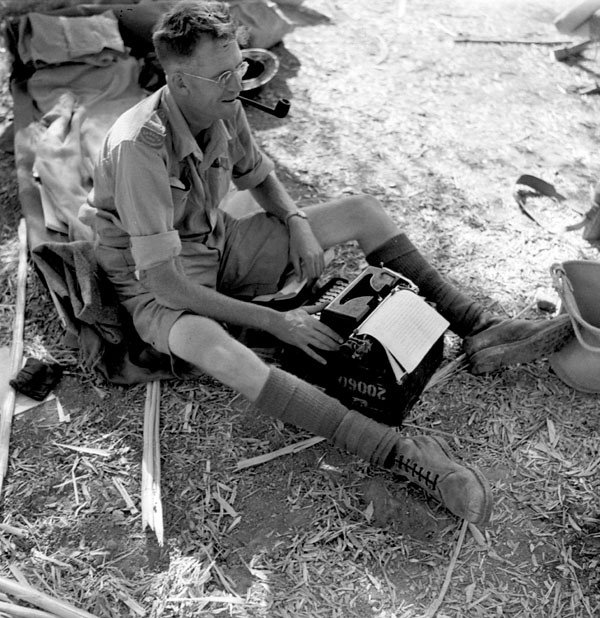
“I took a walk along the historic coast of Normandy in the country of France. It was a lovely day for strolling along the seashore. Men were sleeping on the sand, some of them sleeping forever. Men were floating in the water, but they didn’t know they were in the water, for they were dead.
“The water was full of squishy little jellyfish about the size of your hand. Millions of them. In the center each of them had a green design exactly like a four-leaf clover. The good-luck emblem. Sure. Hell yes.”
In 1944, two days after D-Day, Ernie Pyle led “Omaha Beach: The Wreckage Was Vast and Startling” with those two paragraphs. After the Allied front had stalled several hundred yards inland, Pyle trekked away from the troops and back to the beach to record the loss of human life and wreckage of machines. It was a scene without gunfire or explosions, but it resonated louder than any report from Omaha Beach filed that historic week.
The sound of that report and dozens more is what Paul Repetto is trying to bring new life to in This Is How It Was: Reports From The Front, a one-time only performance of war correspondence and reports from World War II and the Vietnam War. Repetto selected work from famous writers like Pyle, John Steinbeck, James Agee and more that portrayed the myriad aspects of war.
“The first thing I was looking for was writing that truly got to the heart of the matter and reported it with exceptional writing, exceptional description and exceptional understanding,” Repetto says. “Secondly, it had to be performable. It had to be a story that had drama to it and that an actor could bring to life.”
The performance will feature five cast members from the Boulder Ensemble Theatre Company — some stories are recited as monologues, and some feature multiple cast members acting and reciting lines as people in the articles.
Repetto says it was important to find articles that didn’t focus just on the gory details of war, but the widespread impacts it has on soldiers, families and communities.
“It shouldn’t be limited to just the shooting part of war because so much else is actually going on and happening to people,” Repetto says. “The best of the writing sort of captures the fear of people that were involved, the emotions of the people who were involved, the friendships and what’s lost at home and abroad in wars.”
The performance also highlights the change in how wars are covered — and thus how the public perceives war — from World War II to Vietnam to Iraq due to cultural changes and technology, Repetto says. Vietnam marked a big change in war reporting because much of the correspondence was shown on television. The written color provided by World War II correspondents and pub lished in newspapers has slowly grown less impactful over the decades because of the ability to show film of the front lines. Today, Repetto says, war coverage is “day-today, instant reporting,” which doesn’t lend itself to the type of writing Pyle and others perfected.
Not surprisingly then, the performance also prompts the viewer to wonder what was so appealing about war to so many writers — particularly in World War II — who later became fixtures of American literature.
“It’s fairly clear what draws them to it,” Repetto says. “It’s the big thing that’s happening, but I think what draws them to it as a writer is that it’s hard to make sense of. A lot of stuff is going on with a lot of background and a lot of complexity and it provides a writer an opportunity to see beyond the surface and find what’s really happening here and what’s really happening to these people and how are they reacting to it.”
The performance is important because it breathes new life into a period of history and a type of media that is quickly being lost, Repetto says.
“I thought the writings from World War II and Vietnam and what happened is sort of fading because the people involved with them are getting pretty old,” Repetto says.
And Repetto says this format provides the opportunity for these exceptional correspondences to be heard by a new audience in a new way.
“I thought that it should be structured as a dramatic performance because it was the best way to bring these words to life,” Repetto says. “They’re already on paper and people can read them but the best of them, which we’ve tried to include here, almost cry out for someone to bring them off the page in a dramatic way. It was a way to deal with really superb writing and give that writing another dimension.”
Respond: [email protected]














